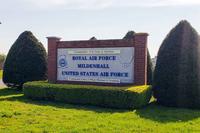
During a conversation with Defense Tech at NAVAIR's Drone-a-palooza today, Capt. Paul Morgan, the program manager for Navy and Marine Corps Unmanned Aerial Systems at NAVAIR, outlined some of the lessons learned from the Iraq war that are affecting how the UAV world is moving forward.
Morgan was obviously concerned about classification issues when the discussion turned toward special operations use of UAVs but he did allow that, for the most part, the snake eaters are happy with what they can do with a UAV at their disposal. Imagine, as a SEAL, knowing where all a hostile ship's gun emplacements are and how many men are on deck as you haul ass across Gulf waters in a RHIB. Or imagine, as a Green Beret, knowing exactly where every insurgent is around the next blind corner as you attempt to work your way through urban areas in a surgical fashion.
The warfighters have been pounding out a steady drumbeat for increasingly capable UAVs in Iraq, and Morgan claims the acquisition machine has responded. "For instance, Shadow went from 'go' decision to fielding in just seven months," he said.
And while everybody likes new and improved stuff, Morgan pointed out the first key to success has been for emerging UAV systems to integrate using as few components as possible. "Less equipment is better," he said. "Nobody's interested in carrying a lot of extra gear around Iraq."
Morgan used the Raven system as an example. Not only did improved batteries provide greater endurance, making the platform more viable in theater, a common infrastructure between the Army and Marine Corps simplified the supply chain once they got there, making life a lot easier for those charged with keeping the drones airworthy.
Talking to the principals on both the goverment and industry sides of the UAV world, one just might get the sense that the Navy's drone program is no longer the grab bag of disjointed efforts without a central vision that it was a few years ago.
"We do have a plan," said Radm. Tim Heely, PEO(W). And referring to the myriad systems that industry has offered up in recent years he added, "We just had to round up the critters and get them in the barn first."
Coming up from Drone-a-palooza: UCAS-D around the carrier and breaking news about a possible Fire Scout deployment in the not-too-distant future.
(Photo: Chucking the Raven airborne)
-- Ward








